
What do you call a place where the language of romance is spoken, one with the most number of volcanoes and butterflies in the world and a land which boasts of football, not as a sport but as its culture and tradition? The world calls it Costa Rica. Officially called the Republic of Costa Rica, it is considered to be one of the most valued environmental destinations of the world due to its wide range of biodiversity. Though it is a small country, it attracts any visitor, simply because of the huge size of its natural wilderness and a number of beaches, rivers, waterfalls and volcanoes. According to a recent study, Costa Rica has been ranked the happiest country in the world. Let us explore further details of Costa Rica.
Bordering the Caribbean Sea as well as the North Pacific Ocean, Costa Rica is a country in Central America lying between Nicaragua (313 km) and Panama (348 km). It covers a total area of about 51,100 sq. km, out of which, land occupies about 51,060 sq. km whereas the area occupied by water is about 40 sq. km. It lies between the geographic coordinates 10°N latitude and 84°W longitude. Stretching a coastline of about 1,290 km, it is slightly smaller than West Virginia and comparatively ranks 130th in the world.
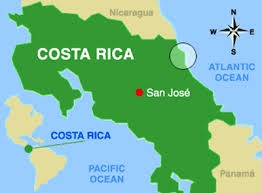
Costa Rica enjoys a tropical and subtropical climate. However, the weather is comparatively cooler in the highlands. The dry season is from December–April and it rains from May–November. Temperatures vary according to elevation ranging between a high of about 30°C in the coastal lowlands to a low of about 18°C in the highlands. The terrain is made up of coastal plains which are separated by rugged mountains, most of which are volcanic in origin with several of them being active. The lowest point of elevation is at the Pacific Ocean at 0 m whereas the highest point of elevation is at Cerro Chirripo at 3,810 m. The only available natural resource is hydropower. Costa Rica faces natural hazards such as occasional earthquakes, hurricanes along the Atlantic coast, frequent flooding of lowlands during monsoon, landslides and active volcanoes. Deforestation, land use changes, clearing of lands for agriculture and cattle ranching, soil erosion, marine pollution, protection of fisheries, solid waste management and air pollution are some of the environmental issues faced by it.
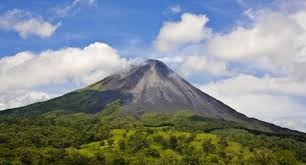
Costa Rica is a country with the highest range of biodiversity in the world. Butterflies, moths and notable insects such as stingless bees, leaf–cutter ants, army ants, and Hercules beetle katydids form an important part of the rainforest fauna. Invertebrates such as spiders and crabs and amphibians such as glass frogs, red–eyed tree frog, poison dart frog, smoky jungle frog, rainforest rocket frog and toad species such as Bufo toad, giant toad and golden toad (now extinct) along with lungless salamander and two species of caecilian are found in Costa Rica. Reptiles include striped basilisk, green iguana, snakes such as boas, vipers, coral snakes, bushmasters and a variety of turtles, lizards and crocodiles are found. Mammals include white–headed capuchin, mantled howlers, sloth bear, anteaters, white–nosed coati, tayra and species of bats such as vampire bat, Honduran bat and the spectral bat along with jaguars, puma, deer, ocelots, jaguarundi, margays and spotted cats are also spotted on the Costa Rican land. Scintillant hummingbird, scarlet macaw, American white pelican, jabiru, quetzal, mangrove hummingbird, three—wattle bellbird, bare–necked umbrella bird, keel–billed Toucan and yiguirro (national bird) are the birds found here. Tropical trees such as mahogany, cedar, evergreen oaks, the timberline deciduous forests and grasses grow here. The vegetation found here are mostly rainforest trees and shrubs like bamboo, palm trees, star fruit, cocoa tree, plantain, pineapple, guava, citrus fruit trees along with the flowering plants such as the parrot flower, bamboo orchid and swamp lily.

Costa Rican society is traditionally based on class, that is, the upper class, upper middle class, middle class and the lower class. The middle class constitutes a major portion of the population. Clothes, car, houses and trips abroad are usual signs of status. Though women have achieved more equality, men still dominate business and politics. Women have combined traditional responsibilities with work and education. Men rely on their wives and mothers or hire help for all the household activities. Heavy agricultural labour is performed by men while women plant coffee, cotton and vegetables. Flirtatious comments on the streets or physical violence at home is widespread. Marriageable age for women is twenty–one whereas for men it is twenty–four but it has been observed that women indulge in premarital relations more than men and divorces and separations are common. The domestic unit comprises extended families and relatives. Infants are dressed up warmly and appointing of an affluent Godparent is an important event. Men greet with a hand shake whereas women greet with a kiss on the cheeks. Costa Ricans often call themselves tico (male) and tica (female). The ticos value relations and well being by adopting a healthy lifestyle which increases the life expectancy. No wonder the national phrase used for greeting is ‘Pura Vida’ which means ‘pure life’. It is also an expression of pride and happiness in the country.
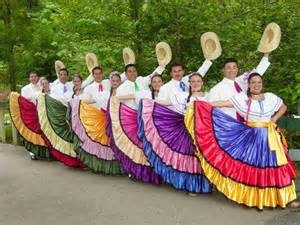
Although, the Costa Ricans speak Spanish at a slow pace, it is their official language whereas English is the second language spoken here. About 76.3% of the Costa Ricans are Roman Catholics, followed by small minority groups of Jehovah’s Witness, Protestants and others.
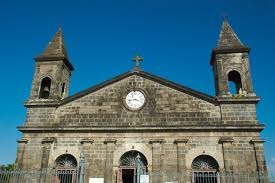
Rice and beans along with corn or maize (in the form of tortilla) is the staple food of the Costa Ricans. Meals are served three times a day with fruits and vegetables. Tamales, a traditional Mesoamerican dish made of masa, of cornmeal dough, lard and spices, stuffed with various mixtures of meat and rice is very popular. The ‘tamales’ is the most preferred food which is served on celebratory occasions such as Christmas and on special occasions such as birthdays or marriages, roasted pig, huge cake or other sweets may be served. However, some natives may prefer a stuffing of deer or turkey meat, pumpkin seeds, tomatoes and sweet peppers. The plantain is another most commonly used fruit which is fried, baked or put in soups and sometimes eaten with a dip. Salsa Lizano, a condiment made from salt, sugar, water, tomatoes, carrot, cauliflower, cucumber, pepper, mustard and turmeric is very popular. Gallo pinto is the national dish of Costa Rica, made from rice and beans and served in breakfast along with some fried eggs, sour cream or cheese with a seasoning of cilantro, red pepper, celery, onion and Salsa Lizano. Beverages include coffee, sweet fruit drinks and soda but beer and alcohol consumption is very high.
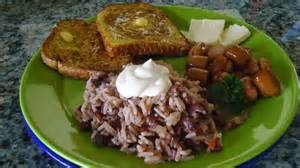
Costa Rica enjoys a stable economic growth. The country’s political stability as well as high education and vast biodiversity have made Costa Rica a key destination for ecotourism, education and foreign investment. Poverty, bureaucracy, insecurity, corruption and illegal immigration from the neighbouring nation Nicaragua have become a matter of concern. Its agricultural products are bananas, pineapples, coffee, melons, ornamental plants, sugar, corn, rice, beans, potatoes, beef, poultry, dairy and timber. Industries which contribute to its development include microprocessors, food processing, medical equipment, textiles and clothing, construction materials, fertilizers and plastic products. Costa Rica exports bananas, pineapples, coffee, melons, ornamental plants, sugar, beef, seafood, electronic components and medical equipments to US, China, Mexico, UK, Hong Kong, Netherlands and Malaysia whereas it imports raw materials, consumer goods, capital equipment, petroleum and construction materials from US, Mexico, China and Japan.



